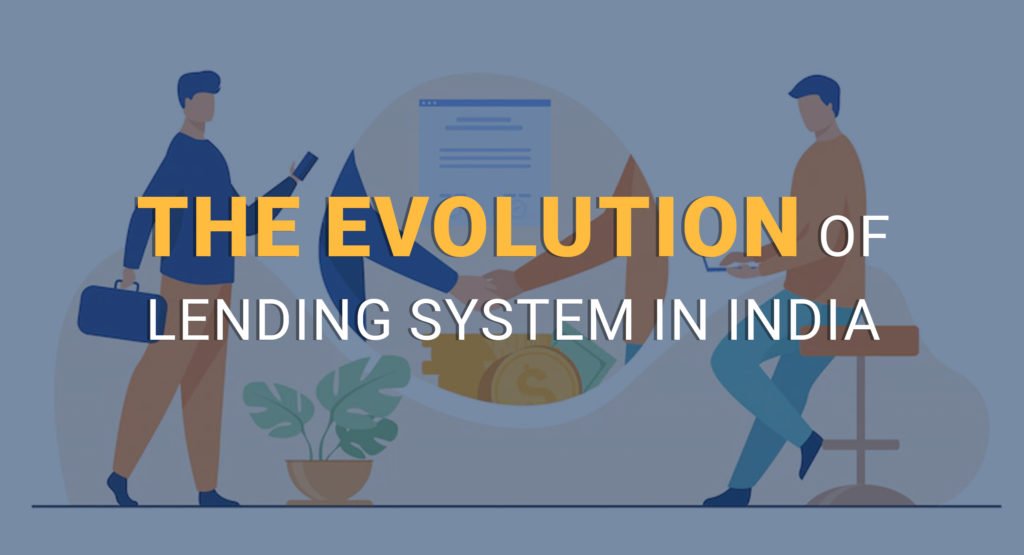The Evolution of Lending Systems in India

The concept of borrowing and lending money has been around for ages. Today, if you are looking for ways to lend money online to someone, the transaction comes with benefits to both parties. The person gets the amount he is looking for. On the other hand, the lender makes a prudent investment where he gets back the entire loaned amount after a time, along with interest.
The age-old idea of lending has given birth to banks, smart loan solutions, and money-lending apps that you see on the market today. However, have you ever wondered about the inception of lending in India?
Let’s take a look at its history through the years.
A brief history of the money lending system in India
In pre-British Rule India:
During the 2nd century CE, the basic idea of money lending gained a foothold in India. People considered it a legitimate method of amassing wealth. It became more structured in the Mauryan era. You will be surprised to know that there were well-defined loan deeds back in the Mauryan Empire. This can be traced back to 321 BC.
Kautilya’s texts from the Mauryan Empire’s rule give a clear insight into the well-developed lending system of that era. Complicated modern-day concepts like the Bill of Exchange and Letter of Credit were also practiced. Furthermore, the Mughal era had two distinct money-lending forms. First was the mode of money payable on demand, and the other was the mode of money payable after a time. This points towards a primary iteration of bank loans.
During the British Rule of India:
The latter half of the 1800s saw major changes in the lending-borrowing market of India. The onset of British rule refined a lot of lending structures. It was the precursor to a lot of modern-day transactions like peer-to-peer lending. We have a standardized and structured money exchange thanks to high-interest rates.
The development of major banking institutions brought uniformity to money lending in the British era. Notably, the Union Bank of Calcutta and the Allahabad Bank werebrendon mccullum rcb established during this period. Automatically, it became the banks’ authority to lend money. Interest rates were standardized and payable periods were decided upon. Several public sector banks and a private sector bank came into existence. This furthered the concept of lending and borrowing money among the masses.
In post-Independence India:
The major development in the country’s financial structure happened after India’s independence in 1947. The country went through troubled times and had to undergo Partition. As a result, the banking structure was also modified to adjust to the country’s changing dynamics. The Reserve Bank of India or RBI, was set up during this time. This step opened the doors for India to conduct regularized financial transactions globally.
This crucial period saw the growth of India’s lending market. Products like home loans, personal loans, and automobile loans slowly started coming into the picture. People became more and more accustomed to the idea of lending and borrowing.
Emergence of Innovative Lending Practices
The lending industry has transformed due to globalization. Earlier people solely relied on banks for borrowing and lending money, but in the past decade, banks have been challenged by P2P lending. This shift has been facilitated by technological revolution. The days of long queues to lend or apply for loans are over. Putting your money in the lending market has emerged as a top investment opportunity today.
Platforms like LenDenClub have popularized the P2P lending model, making it accessible to the masses. With P2P lending, individuals can lend their money to a pool of borrowers. This method has been hailed by experts as the future of lending.
Benefits of lending
Quick and seamless: Due to AI-enabled technology used by almost every P2P money lending app, the process of investing and lending is swift and seamless. People carry out almost all transactions digitally.
Safe and secure: Since most modern-day lending transactions are digital, the process is extremely safe. Digital verifications provide layers of security. The user details and the money are extremely safe and less risky. So, you can invest in companies like LenDenClub peacefully.
High returns: For investors, putting money into P2P lending is a win-win situation. On one hand, the rates of returns are quite high; on the other, AI-based technologies strategically mitigate the risk of investing your money. Hence, it is a relatively safe investment where you can reap the benefits over a period.
Easy diversification: For investors looking for new ways to diversify their portfolio, products like FMPP from LenDenClub offer the perfect solution. LenDenClub’s FMPP® plan diversifies a money lender’s investment into many chunks, some as small as INR 1. It then uses these chunks to service different loans, thus diversifying the risk.
Why should you lend to LenDenClub?
Lending in LenDenClub offers various reasons that cater to both experienced lenders and newcomers alike.
High Returns: You can earn up to 15% p.a. returns. These interest rates often surpass those of traditional savings accounts or fixed deposits.
Diversification: Diversifying your wealth is essential for mitigating risk. LenDenClub offers a diverse range of investment opportunities across various borrower profiles and risk categories, allowing investors to spread their investments and reduce overall risk exposure.
Access to Alternative Investments: LenDenClub opens doors to alternative investment options beyond conventional stocks, bonds, or real estate. By investing in peer-to-peer lending, investors can diversify their portfolios and explore new avenues for generating passive income.
Ease of Use: LenDenClub’s user-friendly platform makes lending hassle-free and convenient. Lenders can easily browse through available loan opportunities, assess borrower profiles, and make decisions with just a few clicks.
Transparency and Security: LenDenClub prioritizes transparency and security, providing investors with comprehensive information about borrower profiles, loan terms, and expected returns. Additionally, robust security measures are in place to safeguard investors’ funds and personal information.
Social Impact: Investing through LenDenClub enables individuals to make a positive social impact by directly supporting borrowers who may have limited access to traditional banking services. By providing financial assistance to underserved communities, investors can contribute to fostering financial inclusion and empowerment.
Potential for Passive Income: Peer-to-peer lending offers an opportunity for passive income generation, as investors earn interest on their investments without actively managing day-to-day operations. This passive income stream can complement existing sources of income and enhance overall financial stability.
Flexibility: LenDenClub offers flexibility in lending amount, allowing lenders to start with as low as ₹500 in small sums and gradually scale up their investments as they gain confidence and experience within the platform.
100% Digital Process
LenDenClub is a digital-first platform. There is no manual or physical interventions needed to start investing.
Zero charges for withdrawal
There is no charge for the withdrawal of your funds. You can get your funds in your bank a/c within 24 hrs of placing a request post-maturity.
Zero Opening Fee
Opening an account on the platform costs you nothing. Open your P2P lending account at zero cost in less than a few minutes.
